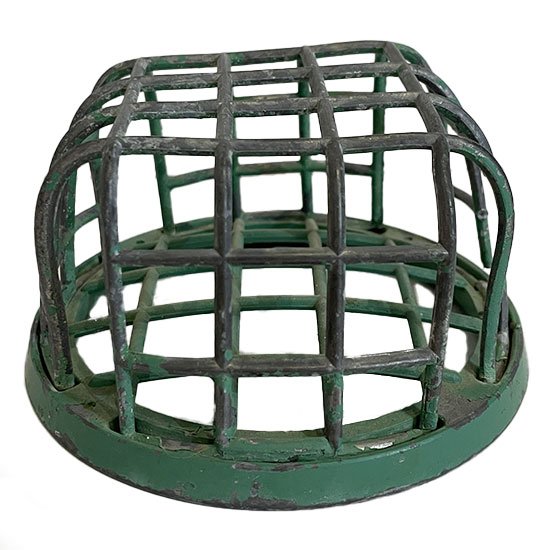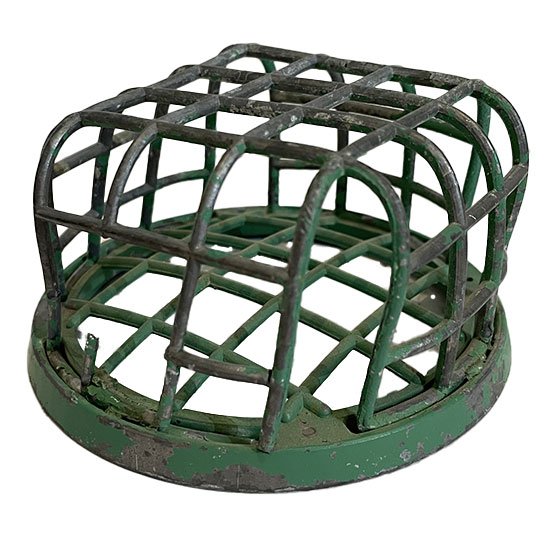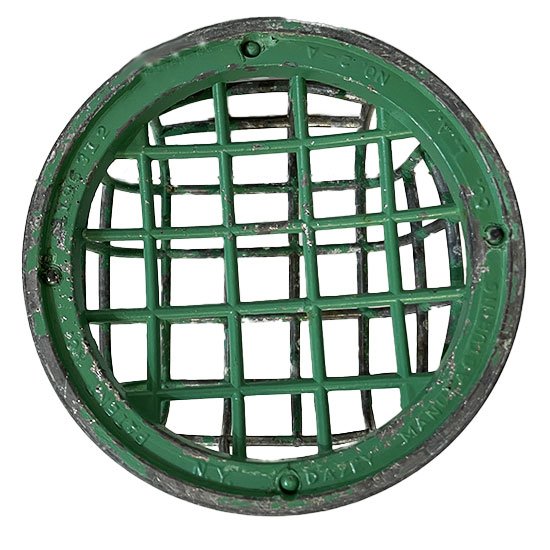 Image 1 of 4
Image 1 of 4

 Image 2 of 4
Image 2 of 4

 Image 3 of 4
Image 3 of 4

 Image 4 of 4
Image 4 of 4





Green Wire Cage Flower Frog
Vintage round cast iron cage flower frog, painted green, early to mid-20th Century, 4 ½ inches in diameter, 2 ¼ inches high, made by the Dazey Manufacturing Company in the United States. This piece has is bent or twisted to one side and missing pieces on the cage, but is still functional and most of all charming.
These “bouquet holders” are made to put at the bottom of a vase, and stems of plants are inserted between cage wires to hold flower arrangements in place. “Flower frogs” are so called because like frogs, they sit in water. Originally from Japan and used for Ikebana, the art of floral arrangement, they came into use in the the West in the late 1880s and gained popularity from the 1900s through the 1970s—and are still employed by florists and flower arrangers today. Flower frogs come in many forms, and are made from metal, ceramic, and glass, often styled in whimsical figures such as dancing women, birds and flowers.
Vintage round cast iron cage flower frog, painted green, early to mid-20th Century, 4 ½ inches in diameter, 2 ¼ inches high, made by the Dazey Manufacturing Company in the United States. This piece has is bent or twisted to one side and missing pieces on the cage, but is still functional and most of all charming.
These “bouquet holders” are made to put at the bottom of a vase, and stems of plants are inserted between cage wires to hold flower arrangements in place. “Flower frogs” are so called because like frogs, they sit in water. Originally from Japan and used for Ikebana, the art of floral arrangement, they came into use in the the West in the late 1880s and gained popularity from the 1900s through the 1970s—and are still employed by florists and flower arrangers today. Flower frogs come in many forms, and are made from metal, ceramic, and glass, often styled in whimsical figures such as dancing women, birds and flowers.
Vintage round cast iron cage flower frog, painted green, early to mid-20th Century, 4 ½ inches in diameter, 2 ¼ inches high, made by the Dazey Manufacturing Company in the United States. This piece has is bent or twisted to one side and missing pieces on the cage, but is still functional and most of all charming.
These “bouquet holders” are made to put at the bottom of a vase, and stems of plants are inserted between cage wires to hold flower arrangements in place. “Flower frogs” are so called because like frogs, they sit in water. Originally from Japan and used for Ikebana, the art of floral arrangement, they came into use in the the West in the late 1880s and gained popularity from the 1900s through the 1970s—and are still employed by florists and flower arrangers today. Flower frogs come in many forms, and are made from metal, ceramic, and glass, often styled in whimsical figures such as dancing women, birds and flowers.
